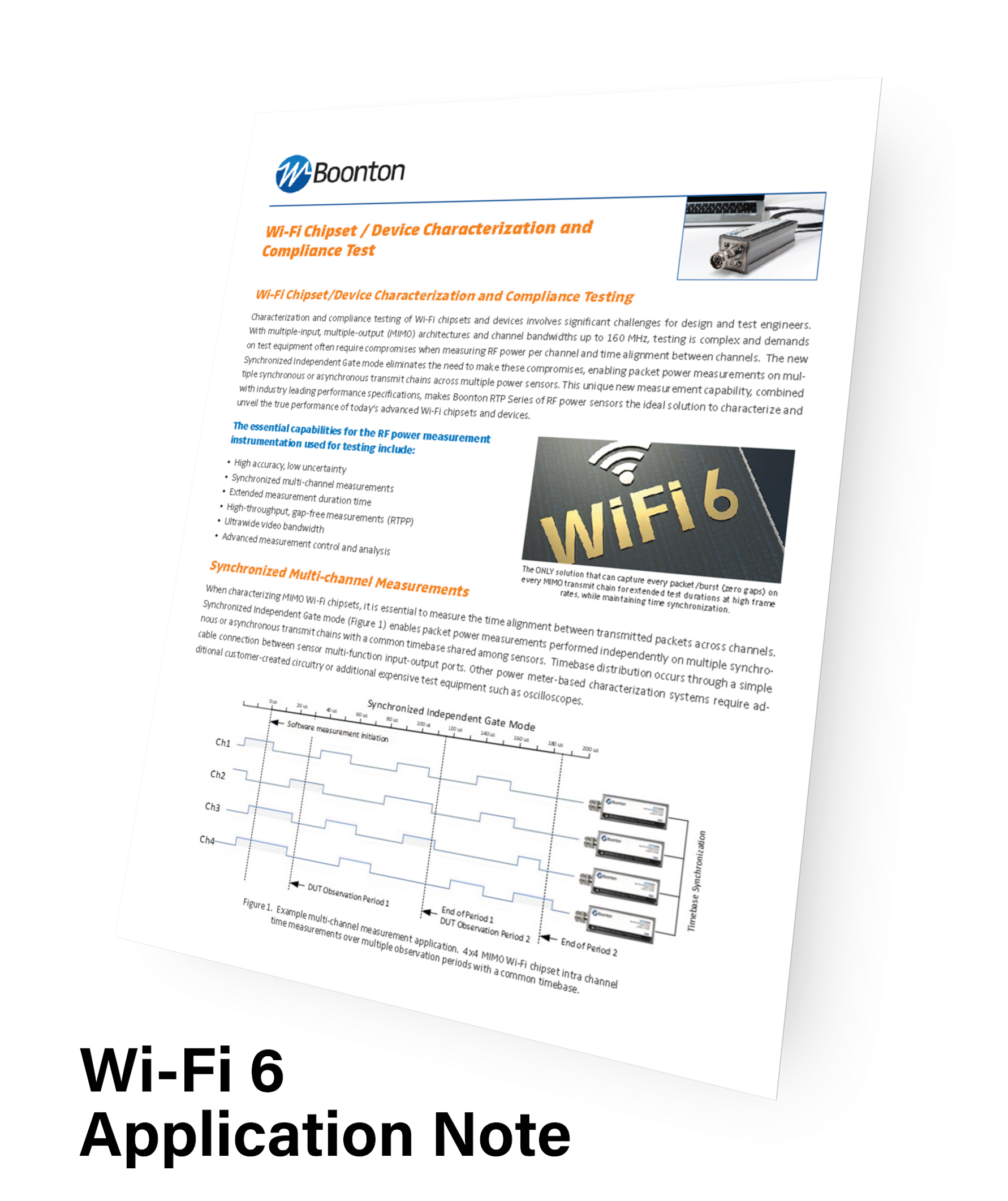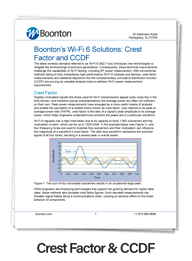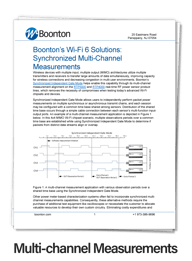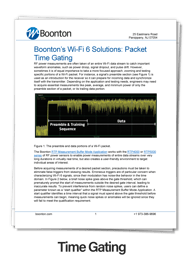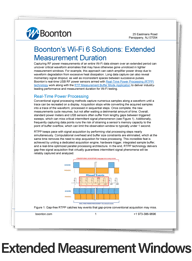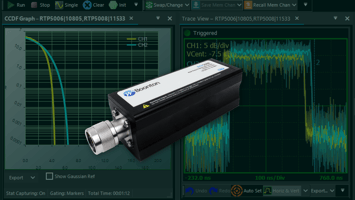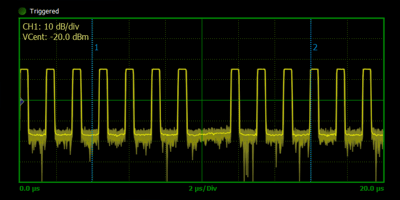The Boonton RTP5000 Series Real-time USB Peak Power Sensors are ideal instruments for fast,...
Facing Wi-Fi 6 Testing Challenges? Learn How to Measure the RF Power of Wide Wi-Fi 6 Channels
Wi-Fi has gone through several generations over time, offering various improvements to support a growing number of connected devices. Wi-Fi is defined and classified by the IEEE 802.11 set of standards, and the latest generation, known as Wi-Fi 6 (802.11ax), was released in 2019. Wi-Fi 6 devices operate in the 2.4 GHz and 5 GHz bands, while Wi-Fi 6E extends the 802.11ax standard into the 6 GHz band.
This blog will reveal how to overcome Wi-Fi 6 testing challenges. In particular, we’ll discuss Wi-Fi 6 channel bandwidths, and the subsequent performance demands on RF power measurement test equipment. We'll also review additional test instrument capabilities that are essential for Wi-Fi 6 testing.
The Bandwidth Demands of Wi-Fi 6
Wi-Fi 6 is designed to increase efficiency and speed in high-density wireless environments. One contributing factor to a faster connection is the expanded data flow on a wider channel. The wider the bandwidth of a channel, the larger the data transfer at a given time.
As a refresher, Wi-Fi channels are used to divvy up a Wi-Fi frequency band. This concept can be likened to different lanes (Wi-Fi channels) on a particular road (Wi-Fi band).
In the case of Wi-Fi 6, channel bandwidths range from 20, 40, 80, and 160 MHz in the 5 GHz band. Wi-Fi-6E frees an additional 1.2 GHz of spectrum in the 6 GHz band, which increases the amount of non-overlapping channels even at the widest widths.
Video Bandwidth of an RF Power Sensor
Engineers must consider an RF power sensor’s video bandwidth (VBW) limits when testing 80 MHz and up to 160 MHz Wi-Fi 6 channels. VBW defines a test instrument’s ability to track a signal’s envelope power, which is the variation in amplitude over time.
What are the risks of using a power sensor that lacks the VBW necessary for Wi-Fi 6 channels? Let’s review:
- Measurement inaccuracy: The potential for errors skyrockets for envelope power, peak envelope power, and average power measurements.
- Replacing peak power measurements: To overcome VBW inadequacies, engineers may replace peak power measurements with average power measurements, which can fail to reveal the magnitude of signal compression and distortion.
- Costly test equipment: Engineers may turn to more expensive and complex test instruments to fulfill VBW requirements, which ultimately reduces the efficiency and increases the cost of Wi-Fi 6 testing.
Instead of sacrificing precision, cost, and ease-of-use, Boonton RTP5000 Series Real-time USB RF Power Sensors offer the widest VBW on the market at 195 MHz. The ultrawide VBW capabilities of the RTP5000 Series makes it the perfect, compromise-free choice to measure 80 MHz and 160 MHz Wi-Fi 6 channels.
Overcome Wi-Fi 6 Testing Challenges
Beyond VBW, Boonton RTP Series of RF power sensors and compatible software utilities, such as the RTP Measurement Buffer Mode Application, offer additional features that are uniquely suited for Wi-Fi 6 testing. Essential capabilities include:
- Crest factor & CCDF: Crest factor measurements and the complementary cumulative distribution function (CCDF) are valuable analysis tools for wide bandwidth Wi-Fi signals to assess the linearity of components.
- Multi-channel measurements: For Wi-Fi 6 chipsets with MIMO architectures, Synchronized Independent Gate Mode enables packet power measurements on multiple synchronous or asynchronous transmit chains with a common time base among sensors.
- Time gating: The RTP Measurement Buffer Mode Application simplifies the process of capturing RF power measurements on specific sections of a Wi-Fi signal through various time gating options.
- Extended measurement windows: With Boonton real-time power sensors and the RTP Measurement Buffer Mode Application, engineers can capture intermittent signal phenomena reliably and thoroughly thanks to gap-free acquisition over long measurement windows.
Discover how to overcome Wi-Fi 6 challenges with Boonton products by reading our five-part Wi-Fi 6 article series.
With ultrawide VBW that can accommodate Wi-Fi 6 channel bandwidths as well as synchronized multi-channel measurements, extended measurement duration time, gap-free signal acquisition, and advanced measurement control and analysis, Boonton solutions are the ideal choice for accurate and reliable Wi-Fi 6 testing.

